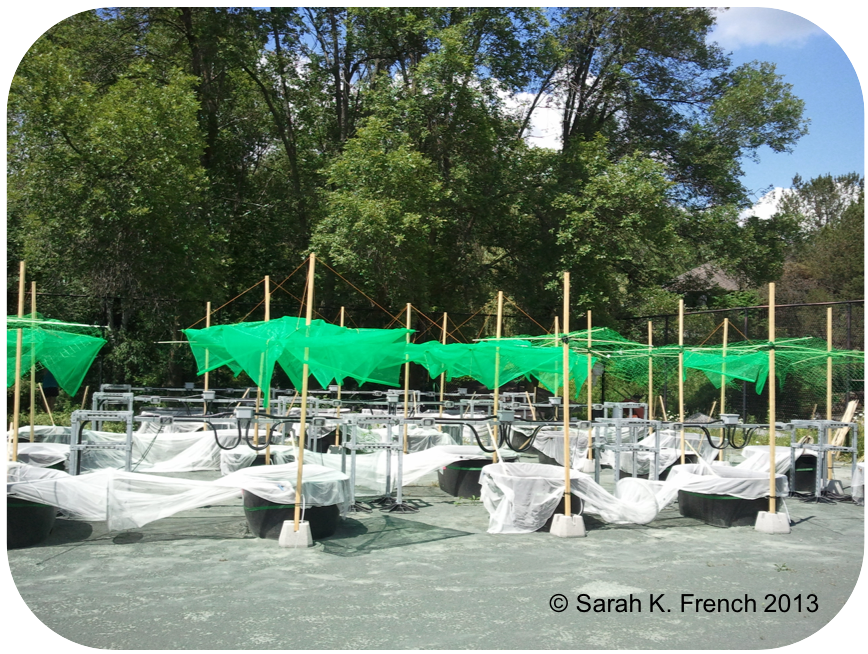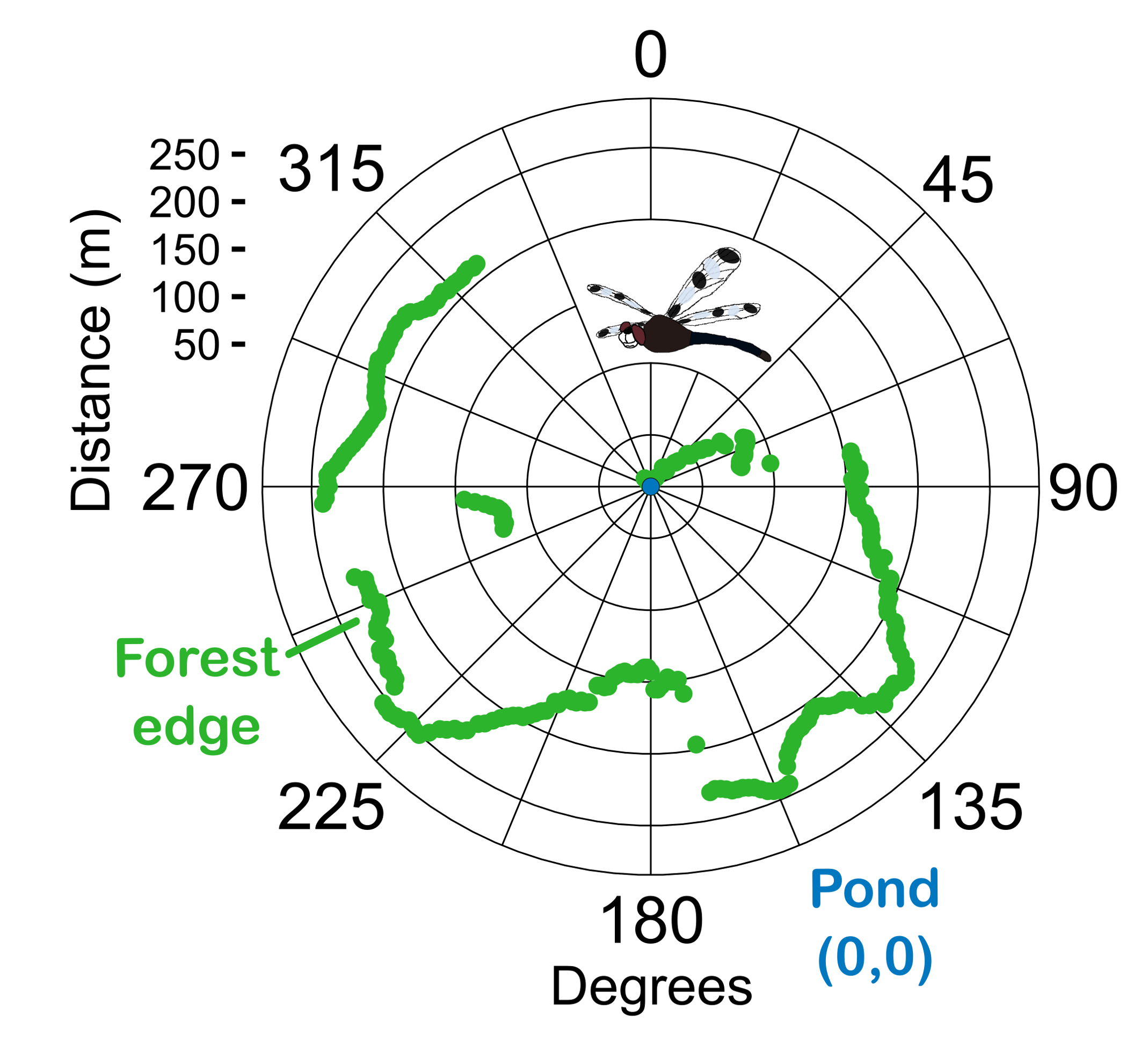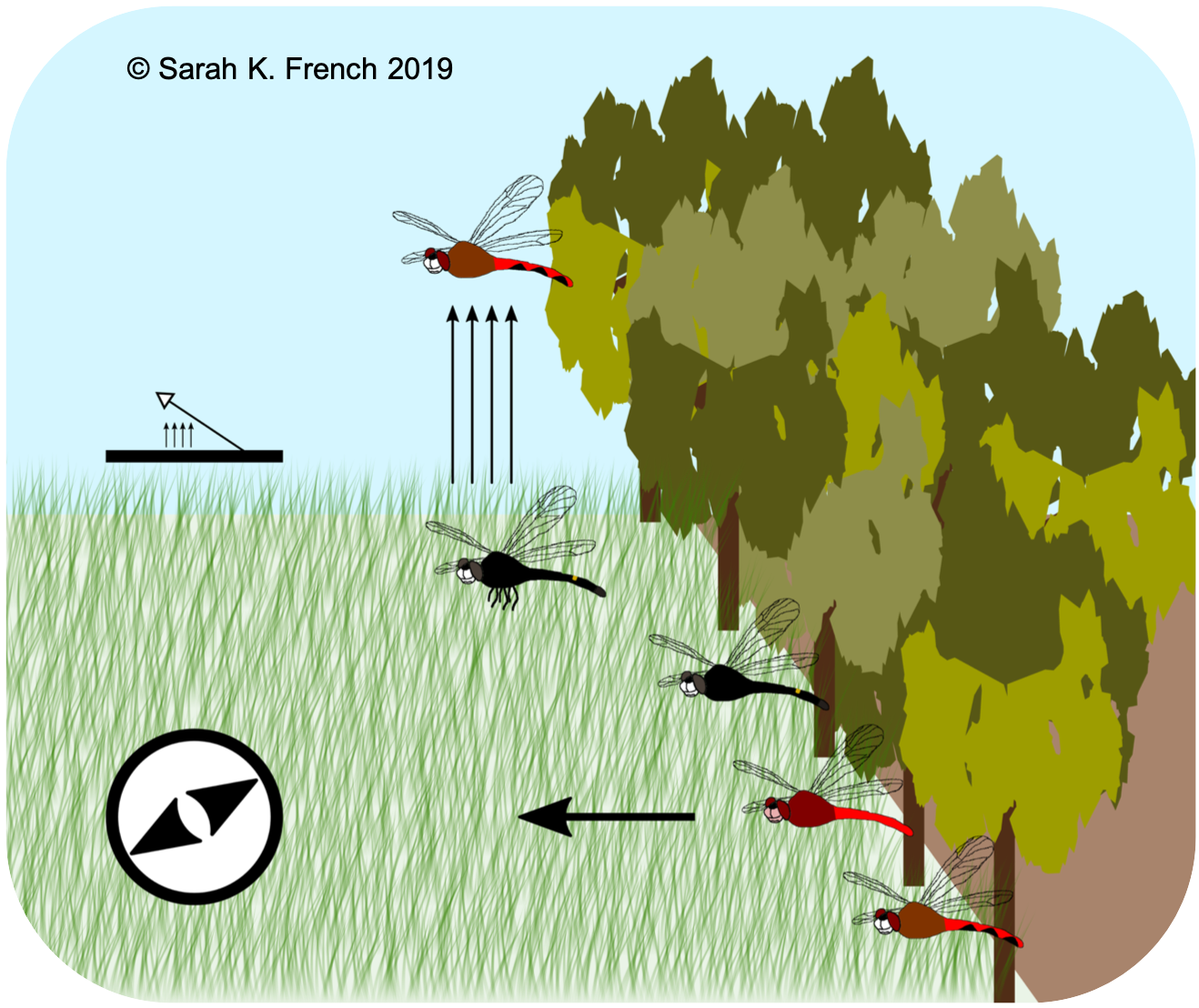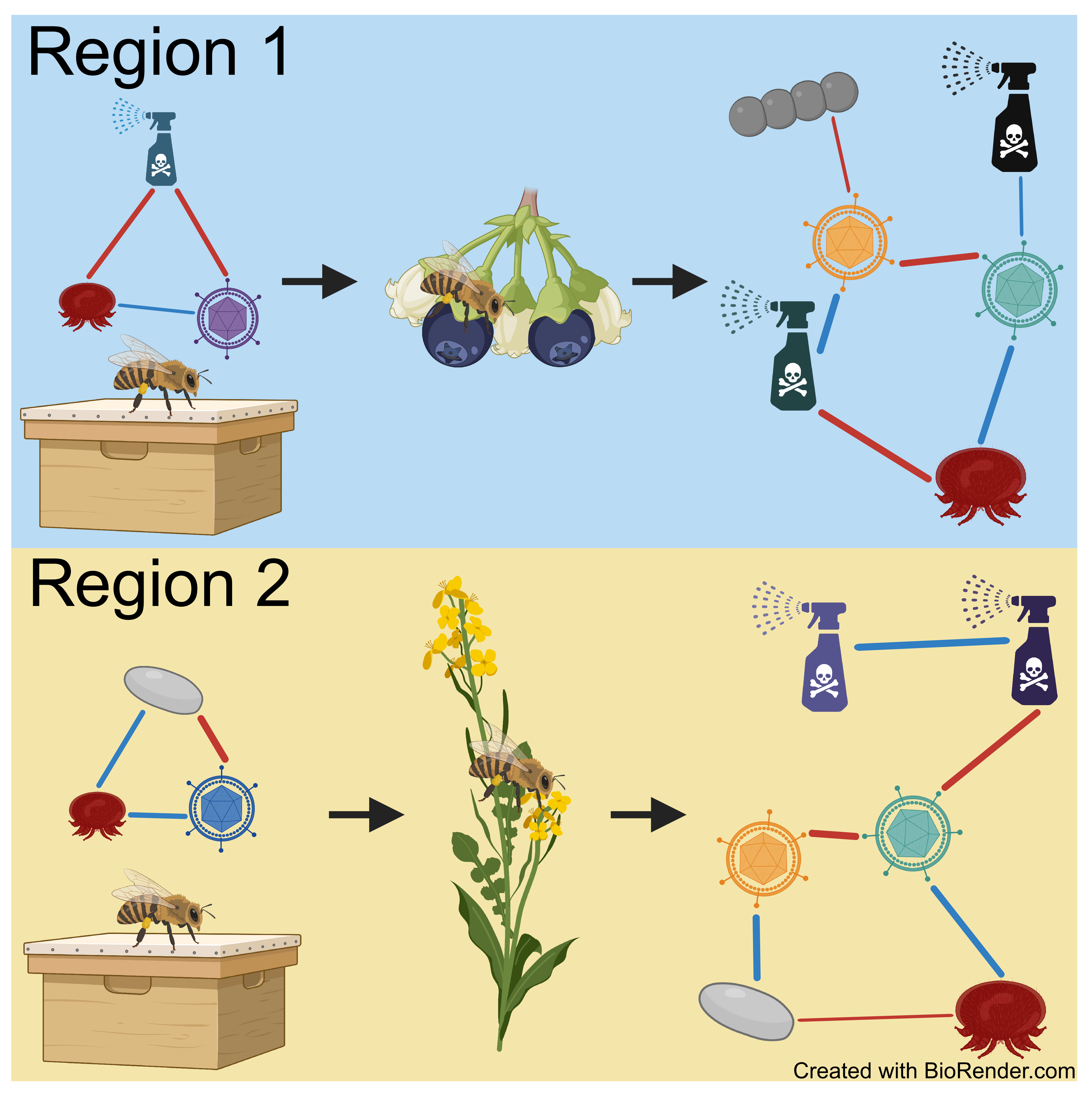Canopy cover over aquatic mesocosms limited the arrival of adult dragonflies but did not affect larval survival (French and McCauley 2018). This limited attraction during reproductive habitat selection likely causes low larval dragonfly diversity in closed habitats (McCauley et al. 2008).
Aquatic mesocosms under artificial shading ("open" and "closed") at Koffler Scientific Reserve (KSR). The white netting was removed before experiments. © S. French (2013).
The proximity of forest edges around a pond, as potential roosting habitat, did not affect adult dragonfly arrival in relatively open landscapes (Leite et al. 2021).
Proximity of forest edges at 360° around a central pond at KSR. © S. French (2021).
Movement Behaviour
When released at forest edges, more dragonflies flew towards fields than forests, suggesting forests impede dragonfly movement at small scales. Responses were species-specific. Open environments such as fields likely facilitate the movement of dragonflies at small and large scales (French and McCauley 2019).
Dragonflies flew more towards fields than forests when released at a forest edge at KSR. At the forest edge, Leucorrhinia intacta (in black) took flight less than Sympetrum (in red). © S. French (2019) and John Wiley and Sons.
Populations
Honey bee colonies are exposed to multiple stressors all at once. Exposure to crops during pollination increases the complexity of stressor networks, which vary among crops and regions (French et al. 2024). In collaboration with researchers from BeeCSI.
Stressor networks differ across time, crops, and regions. © S. French (2024) and Cell Press.
Determining how hive-level and landscape-level stressors including pests, pathogens, and pesticides, interact to influence honey bee health in Canadian agricultural regions.
Communities



